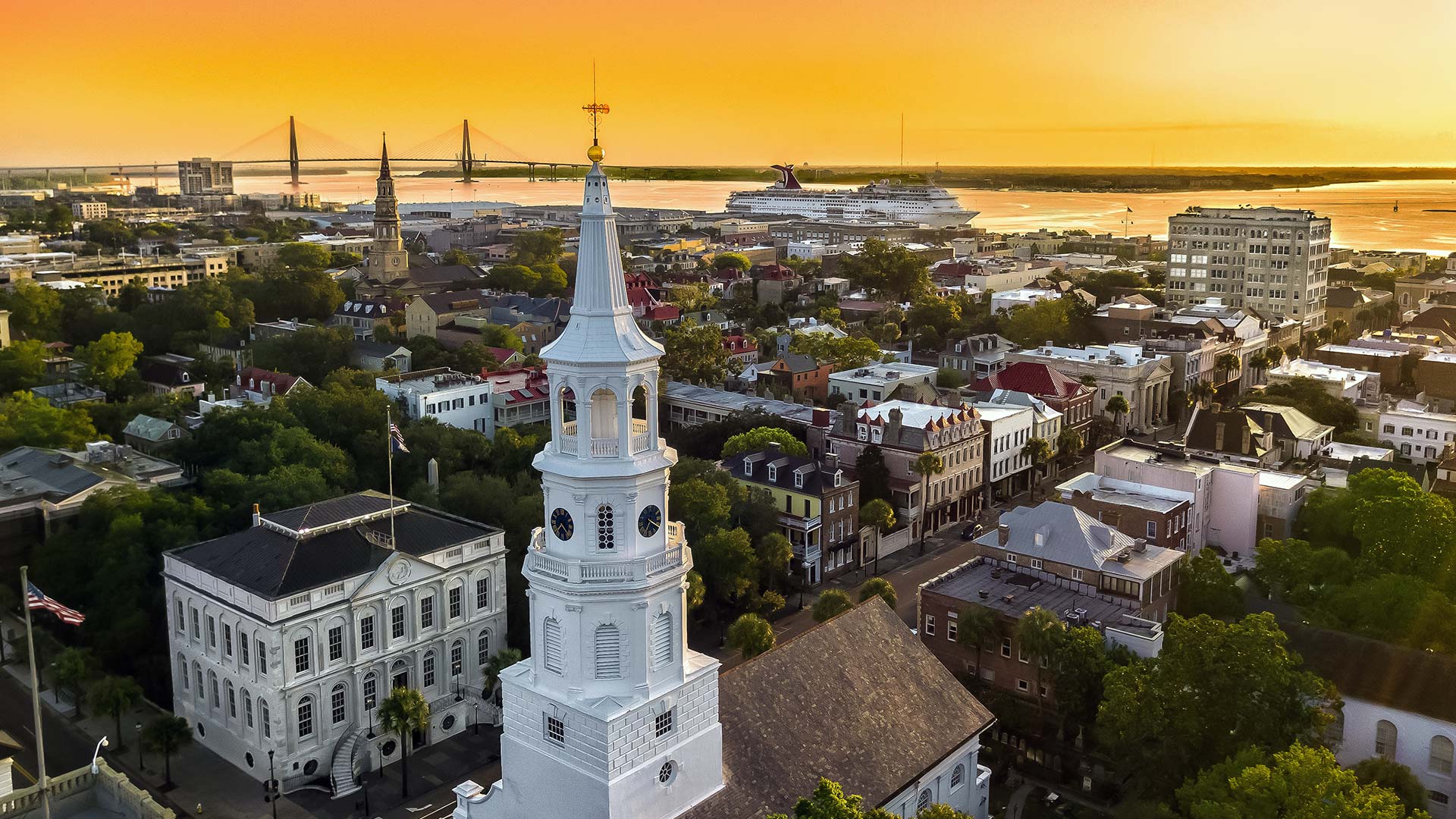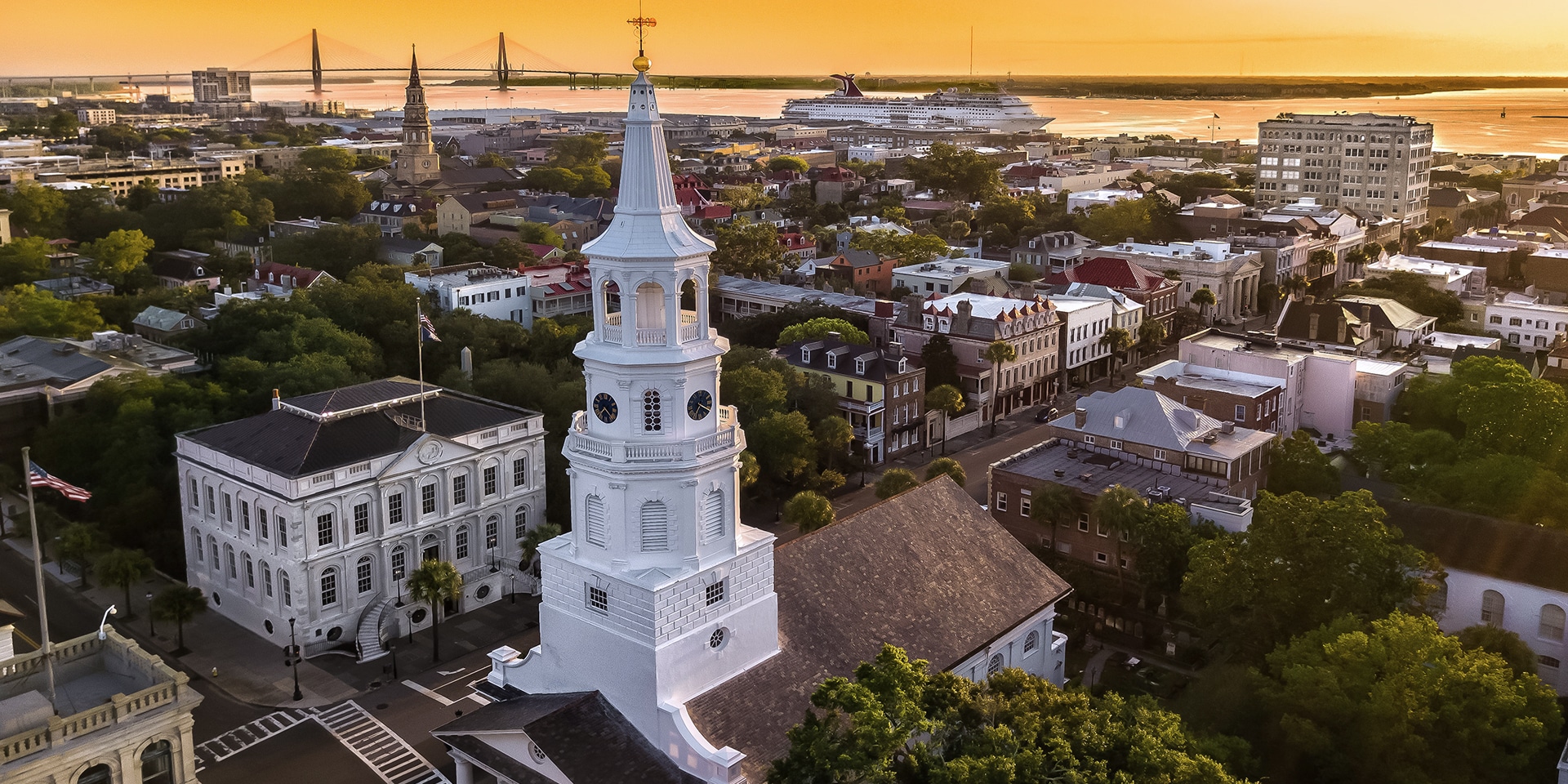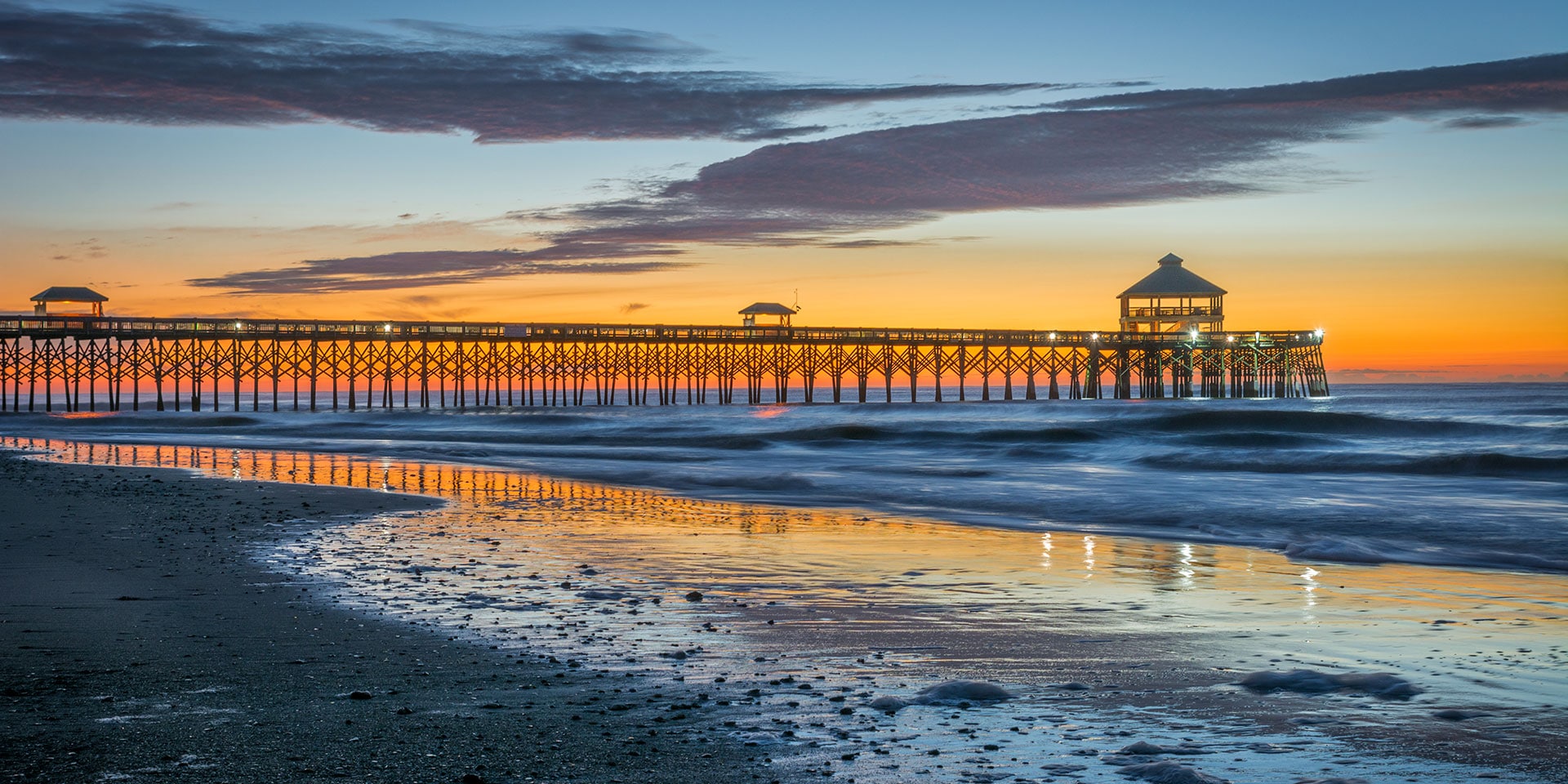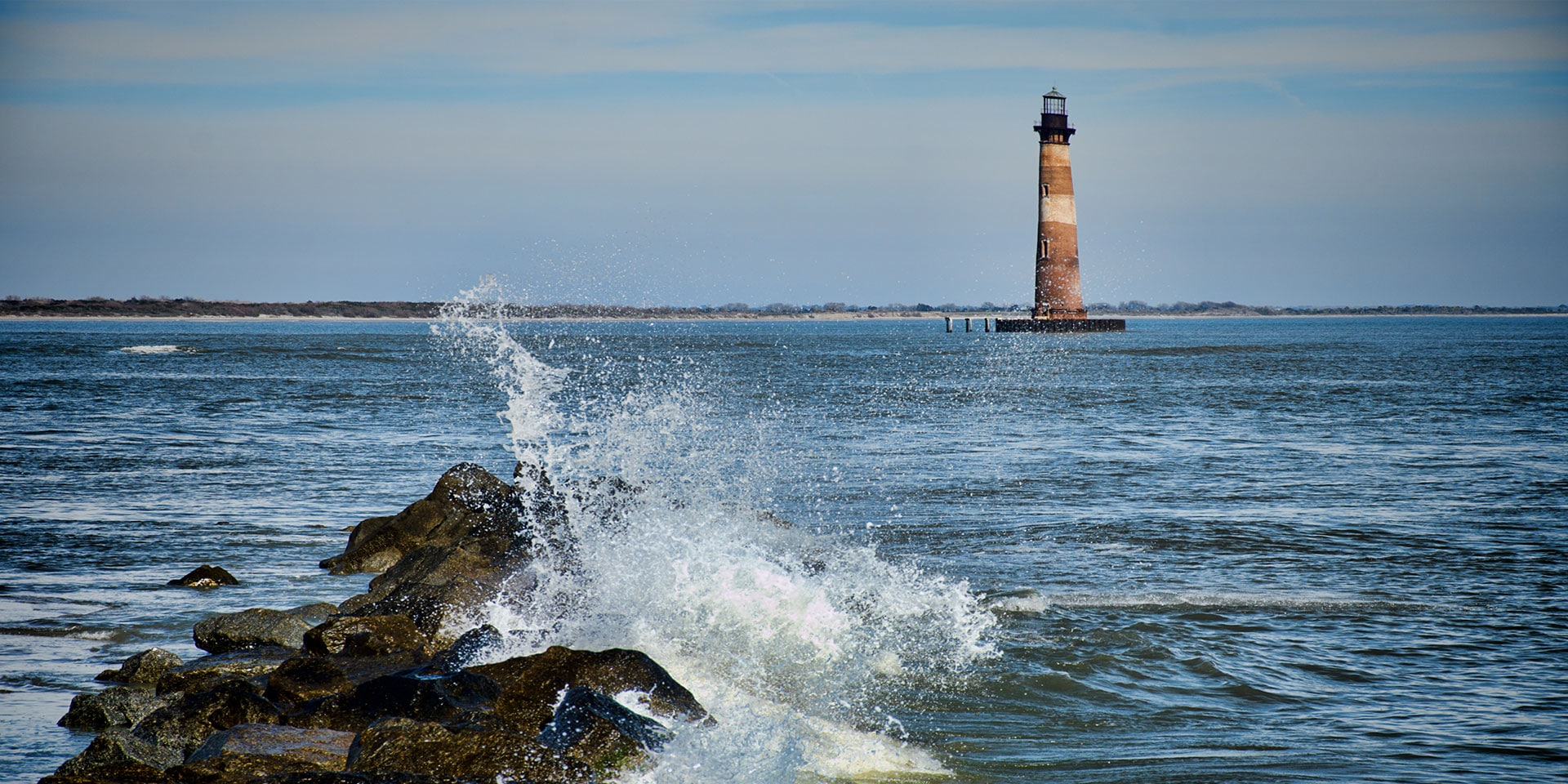
Residents are hard at work to save the Morris Island Lighthouse. (Photo: Getty Images)
CharlestonSeeing the Light: Residents Fight to Save a Charleston Landmark
By Chris MorrisSince 1876, the Morris Island lighthouse has stood guard at the entrance to the Charleston Harbor. Located just north of the city’s Folly Beach, it’s an iconic structure that has survived an 1885 cyclone, an 1886 hurricane and 1989’s devastating Hurricane Hugo.
But apathy almost killed it — and almost certainly would have if it weren’t for Save the Light, a grassroots organization dedicated to helping preserve the lighthouse. But the battle is far from over.
Despite its importance to Charleston’s harbor through the end of the 19th and first half of the 20th century, the Morris Island lighthouse has seemingly always faced a fight. When it was initially constructed, the shipping channels came directly toward Morris Island.
But less than 20 years after the lighthouse was put into operation, the city built jetties to protect the shipping lanes and change the flow of traffic into and out of the harbor.
That also changed the flow of sand in the ocean waters, resulting in the fairly rapid erosion of Morris Island.
A keeper lived in the lighthouse until the late 1930s, when the erosion got so bad that he and his family were forced to evacuate the living quarters. It then became the keeper’s duty to take a boat out to the lighthouse on a daily basis to ensure the light shone constantly.
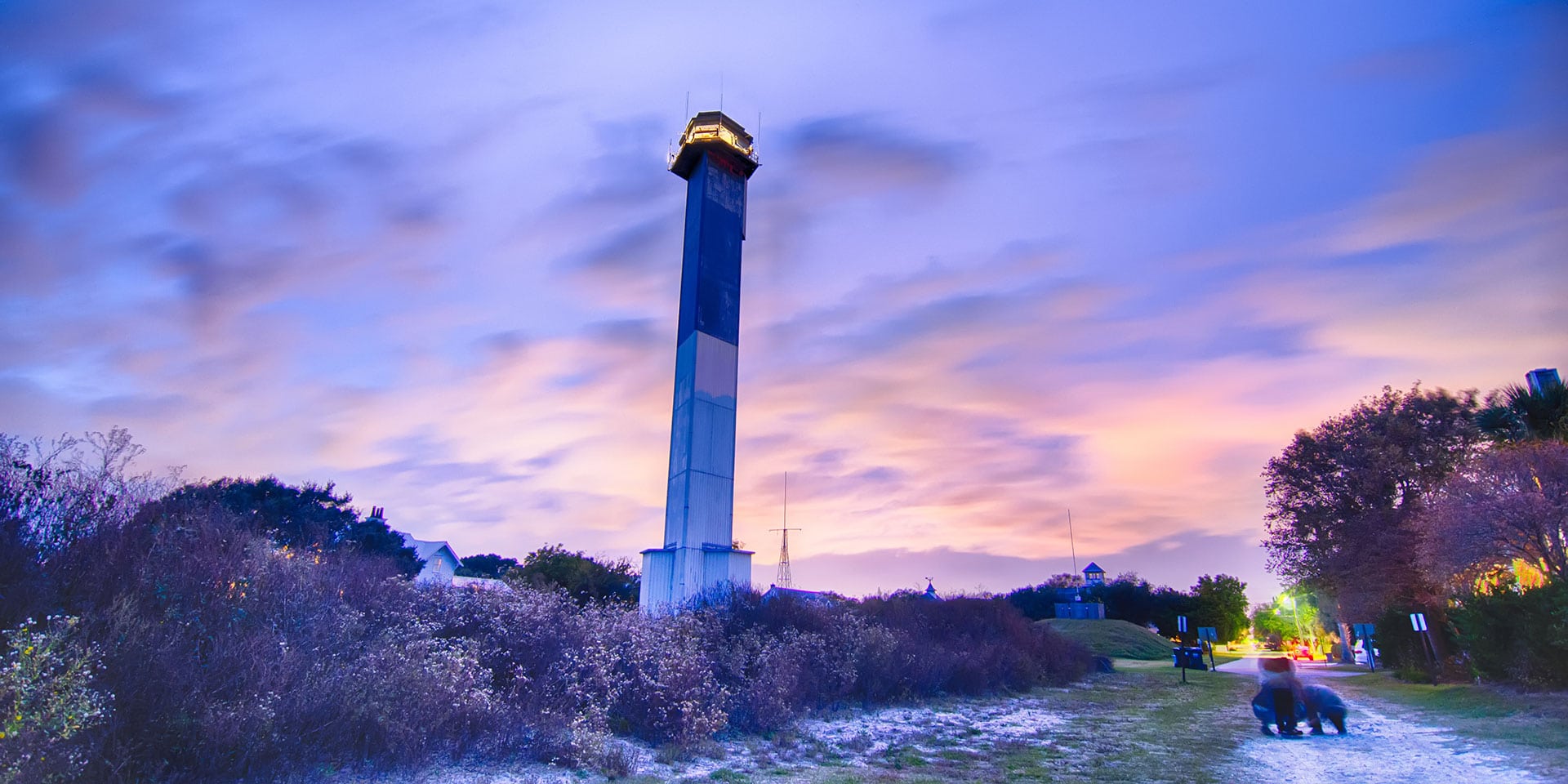
That arduous job lasted until 1962, when a new modernized lighthouse was opened on Sullivan’s Island, a few nautical miles north of Morris Island.
Made with a steel frame and aluminum alloy skin and designed in a triangular shape to better withstand Mother Nature’s forces, the Sullivan Island lighthouse is functional and logical. But it lacks the romance of Morris Island’s more traditional rounded and brick-built appearance. And it certainly lacks the history.
“Charleston is so famous as a seafaring city,” says Al Hitchcock, chairman and a founding member of Save the Light. “Think about all the times since Charleston was founded — all the ships that have come in and needed navigational aid. They looked for this lighthouse. It’s so important to the maritime history of Charleston.”
Today the Morris Island lighthouse is situated not on land, but well offshore in the Atlantic Ocean. The three-story keeper’s dwelling, schoolhouse and 13 other buildings that were attached to it are long gone, victims of Hurricane Hugo, those shifting sea patterns and time.
The tower shows cracks caused by the 1886 earthquake. The glass in the upper lantern room is gone. And the metalwork and stairs inside are corroding.
But people still find themselves drawn to the structure. The interior is inaccessible, but that doesn’t stop people from admiring it from Folly Beach or navigating their boats to its base.
Hitchcock’s own history with the Morris Island lighthouse dates back to 1988 when he moved to the city. As so many city residents do, one of the first things he did was buy a boat — a flat bottomed johnboat to be precise — and begin exploring the waters, including those that were, by that point, surrounding the Morris Island lighthouse.
“There was a sign saying ‘Do Not Enter,’ and that’s just an invitation for people to go inside,” he says. “People were taking everything they could and spray painting their girlfriends’ names inside. That got to me. I thought, ‘We have to do something. We have to protect this lighthouse,’ all through the [rest of the] 1980s and 1990s.”
Save the Light got its chance in 1998.
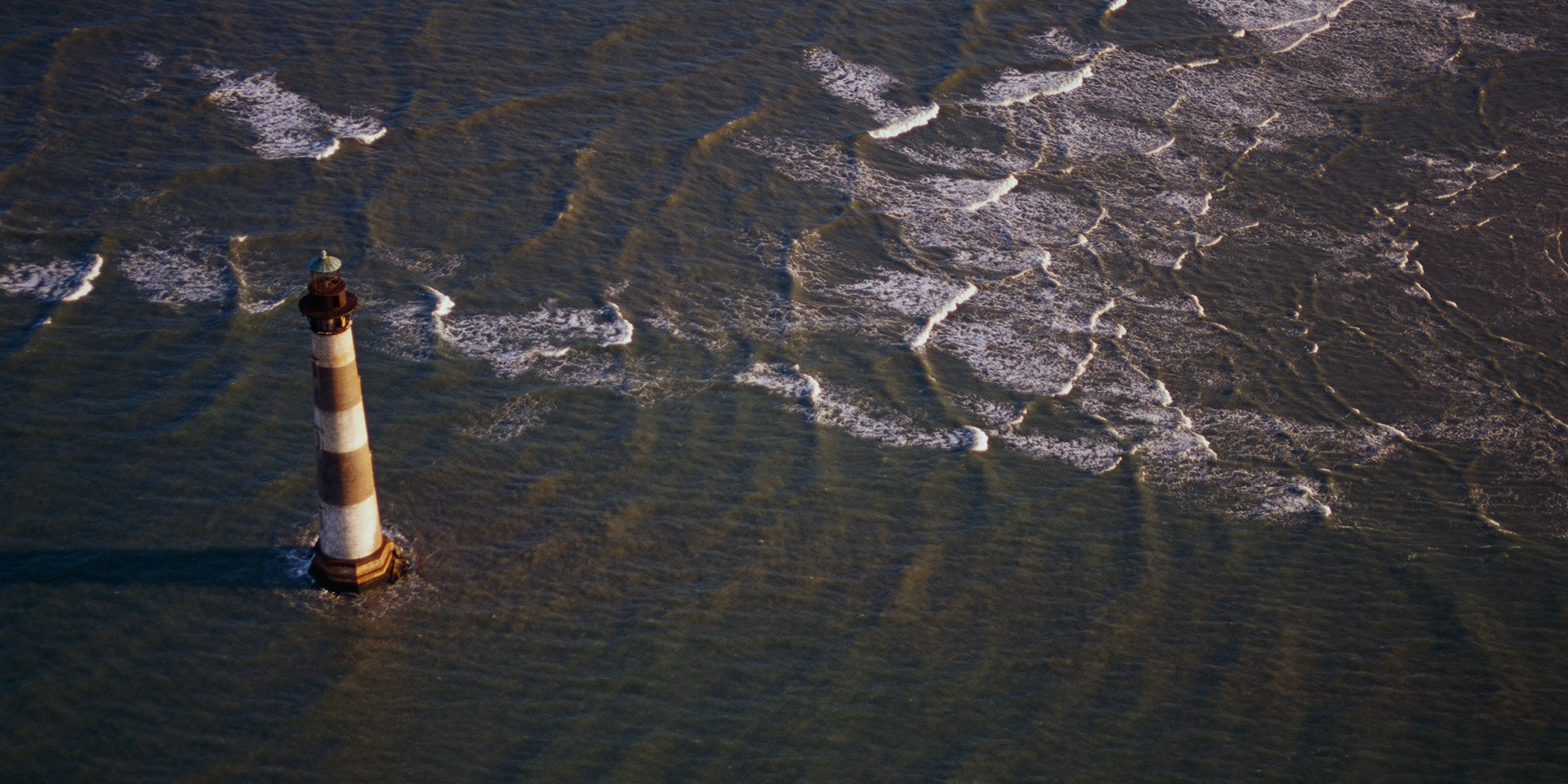
After the lighthouse was decommissioned in 1962, the Coast Guard had planned to demolish it. An outcry from Charleston residents, though, led to it being sold at auction to John Preston Richardson for the price of roughly $3,000. Astonished by the state of the lighthouse’s disrepair, he later sold the structure and its surrounding land to S.E. “Speedy” Felkel for a reported $25,000.
Felkel later used the lighthouse as collateral for a loan, which he defaulted on, leading the creditor to put it up for sale.
No one was initially interested in owning a decrepit lighthouse, though, which gave Save the Light a window of opportunity. It purchased the Morris Island lighthouse in 1999 for $75,000, quickly repaying the loan through the sale of 400 limited-edition prints of the lighthouse from local artist Jim Booth.
“Once we had done that, we started to figure out a way to get that lighthouse into some ownership where we could secure more funds for it,” says Hitchcock.
Eventually they convinced the state of South Carolina to take over ownership, something officials had long resisted. But a promise by Save the Light to be responsible for all operations eventually swayed the Department of Natural Resources.
With the state now the official owner (and the lighthouse leased back to Save the Light for the next 99 years), the group was able to secure $3.5 million from the Army Corps of Engineers in 2007 to install a cofferdam around the tower to protect it from the sea.
In 2010 the group completed the second phase of its renovations, installing new concrete micropiles under the foundation to provide stability and keep the lighthouse from collapsing. (Teredo worms — shipworms — had been eating the original wooden piles.)
Today the group has about $1 million put aside but needs another $5 million to finish its work — repairing the cracked bricks, protecting the metalwork and other repairs.
That might seem a sizable gap, but Hitchcock views it another way.
“We’ve spent $7 million so far, so I look at it as we’re halfway there,” he says. “The way I see it, all I need are five good donors … but it’s very critical we get in there as soon as we can to stop the corrosion.”
There’s no long-term plan to make the lighthouse accessible to the public. Rather, Save the Light wants to ensure it will remain standing and will be a symbol the community can rally around — and learn more about from a kiosk on Folly Beach (in an building that once served as a Coast Guard station).
To remind the city of the lighthouse’s iconic importance, Save the Light managed to light the Morris Island lighthouse one more time on October 1, 2016, using a solar battery-powered light from state utility company SCE&G.
It was an event that drew thousands of people to the beach, where some stood on the sand and others in the water gazing upward at the piece of history. Some anchored their boats nearby to take it in.
Hitchcock watched from his home, where he can view both the Morris Island and
Sullivan’s Island lighthouses from either his back porch or bedroom window.
“I’m a boater and sailor, and I’ve always been interested in the sea,” he says. “It’s always been in my veins. I boat all the time between my house and the lighthouse. I catch shrimp there. I fish there. I hang out there. I even spend the night on my sailboat there. … It’s in my blood, and it’s in my backyard.”





